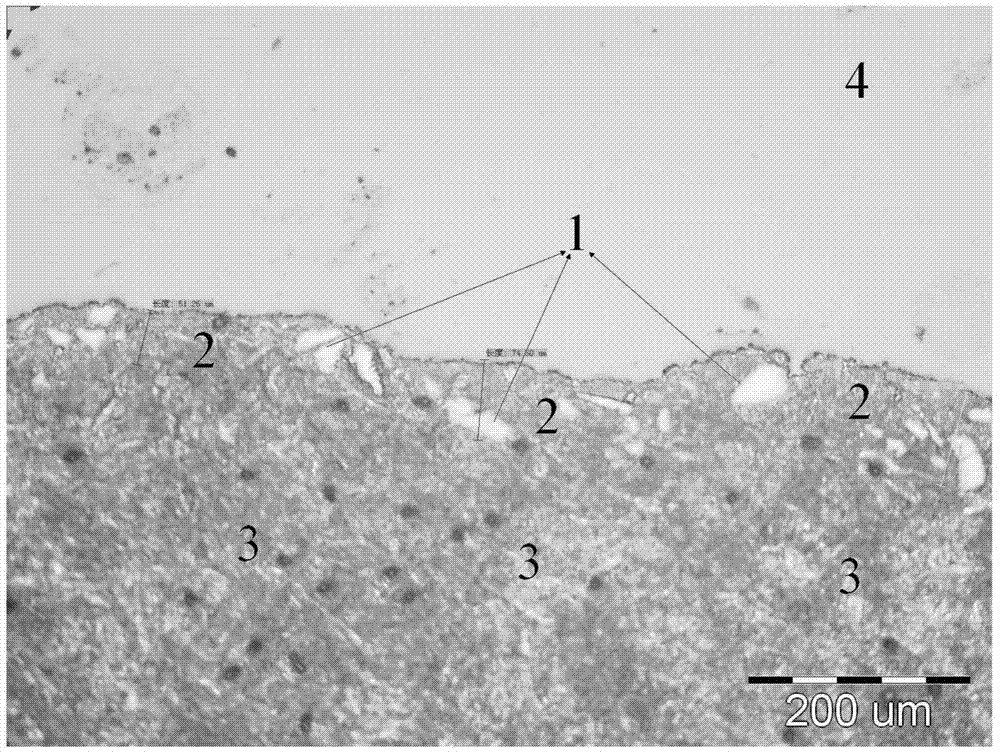A lead-carbon battery negative plate
A lead-carbon battery and negative plate technology, which is applied to lead-acid battery electrodes, battery electrodes, circuits, etc., can solve the problems of weakening the capacitance characteristics of carbon materials, such as the hole effect of carbon materials, and achieve inhibiting negative electrode sulfation, improving migration rate, The effect of strong practicality and stability
- Summary
- Abstract
- Description
- Claims
- Application Information
AI Technical Summary
Problems solved by technology
Method used
Image
Examples
Embodiment 1
[0019] The lead carbon negative pole plate is prepared according to the following steps:
[0020] (1). Pour ordinary lead paste and high carbon content lead paste into airtight containers respectively, and stir for 15 minutes;
[0021] (2). After mixing evenly, add water slowly during stirring, and stir for 10 minutes; then, add sulfuric acid, continue stirring for 15 minutes, properly adjust the amount of water and acid, and control the apparent density of the lead paste at 4.0~4.5g / ml;
[0022] (3). Coat ordinary lead paste on the lead-calcium grid alloy, and then apply equal amounts of lead paste with high carbon content on both sides of the plate coated with ordinary lead paste;
[0023] (4). Put the paste-coated negative plate in an oven for curing and drying to prepare a lead-carbon negative plate. The curing temperature is 65 °C and the curing time is 24 h.
[0024] Such as figure 1 As shown, the outer layer of the formed lead-carbon negative electrode is coated wit...
Embodiment 2
[0032] Weigh the raw materials required for ordinary negative lead paste, and weigh them in parts by mass: 100 parts of lead powder; 0.5 parts of carbon material A; 1.4 parts of barium sulfate; 0.5 parts of sodium lignosulfonate; 0.5 parts of humic acid; 0.1 parts; 15 parts of water; 8 parts of sulfuric acid.
[0033] Weigh the raw materials needed for high carbon content negative electrode lead paste, and weigh them respectively by mass: 100 parts of lead powder; 0.5 parts of carbon material A; 10 parts of carbon material B; 1.2 parts of barium sulfate; 0.3 parts of sodium lignosulfonate; 0.3 parts of humic acid; 0.2 parts of short fiber; 16 parts of water; 8 parts of sulfuric acid.
[0034] Described carbon material A is a kind of carbon black, and specific surface area is 5~50 m 2 / g.
[0035] The carbon material B is one or more of activated carbon, graphite, graphene, and carbon black; the carbon material B has a hierarchical pore structure, and the average pore diamete...
Embodiment 3
[0039] Weigh the raw materials required for ordinary negative lead paste, and weigh them in parts by mass: 100 parts of lead powder; 0.5 parts of carbon material A; 1.4 parts of barium sulfate; 0.5 parts of sodium lignosulfonate; 0.5 parts of humic acid; 0.1 parts; 15 parts of water; 8 parts of sulfuric acid.
[0040] Weigh the raw materials needed for high carbon content negative electrode lead paste, and weigh them respectively by mass: 100 parts of lead powder; 0.5 parts of carbon material A; 12 parts of carbon material B; 1.2 parts of barium sulfate; 0.3 parts of sodium lignosulfonate; 0.3 parts of humic acid; 0.2 parts of short fiber; 16 parts of water; 8 parts of sulfuric acid.
[0041] Described carbon material A is a kind of carbon black, and specific surface area is 5~50 m 2 / g;
[0042] The carbon material B is one or more of activated carbon, graphite, graphene, and carbon black; the carbon material B has a hierarchical pore structure, and the average pore diamete...
PUM
| Property | Measurement | Unit |
|---|---|---|
| pore size | aaaaa | aaaaa |
| pore size | aaaaa | aaaaa |
| specific surface area | aaaaa | aaaaa |
Abstract
Description
Claims
Application Information
 Login to View More
Login to View More - R&D
- Intellectual Property
- Life Sciences
- Materials
- Tech Scout
- Unparalleled Data Quality
- Higher Quality Content
- 60% Fewer Hallucinations
Browse by: Latest US Patents, China's latest patents, Technical Efficacy Thesaurus, Application Domain, Technology Topic, Popular Technical Reports.
© 2025 PatSnap. All rights reserved.Legal|Privacy policy|Modern Slavery Act Transparency Statement|Sitemap|About US| Contact US: help@patsnap.com

